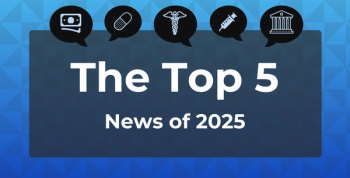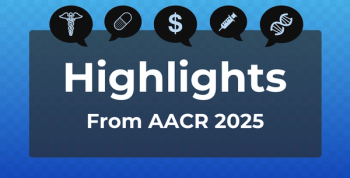
Maternal Deaths Rise in US as Research and Policy Lag
Key Takeaways
- The US has a high maternal mortality rate due to underfunded research and restrictive policies prioritizing fetal over maternal health.
- Efforts to prioritize women's health research exist, but funding remains insufficient, with a small fraction allocated to pregnancy studies.
In the US, individuals die during pregnancy and the postpartum period at a greater and increasing rate than in any other high-income country.
Despite being a high-income country, the US has the highest and an increasing maternal mortality rate, primarily due to underfunded and misdirected research that often prioritizes fetal development over the pregnant person's health, exacerbated by restrictive policies and a lack of involvement from frontline
Recent efforts to prioritize women's health research, like the FDA Office of Women's Health and the Society for Women's Health Research, aim to optimize women's health by coordinating and promoting research, policy development, and education.2,3 Researchers significantly underfund pregnancy-related research, and existing funding considers pregnant people as hosts whose social, intrinsic biological, and environmental determinants affect fetal and child development instead of focusing on the health of pregnant individuals themselves.1
Underfunded research and government policy, like the Supreme Court's decision to overturn Roe v Wade 3 years ago, have led to a complete or 6-week abortion ban across some states.4 Research estimated 478 excess infant deaths in 14 states with bans, with the largest increases among Black infants. Earlier this week, the Trump administration announced it will rescind a guidance that former President Joe Biden implemented.5 That guidance used a federal law to require hospitals to stabilize patients needing emergency care, including by providing an abortion. Emergency medical conditions included, but were not limited to, ectopic pregnancy, complications of pregnancy loss, or emergent hypertensive disorders, such as preeclampsia with severe features.
These impacts appear across the country, as a current case in Atlanta, Georgia, demonstrates. Adriana Smith, a Black woman, was declared brain dead 3 months ago, but she remains on life support to allow her fetus to grow enough for delivery, a requirement under the state's anti-abortion law.6
The NIH spent only 8.8% of its total budget on women's health research in the past decade, and only a fraction of that funded pregnancy studies, according to a recent report by the National Academies of Sciences, Engineering, and Medicine.1 Overall, funding comprises a small proportion of the NIH portfolio for research regarding preconception, pregnant, and postpartum individuals.
Historically, the Eunice Kennedy Shriver National Institute of Child Health and Human Development (NICHD) has funded most pregnancy research, emphasizing the child as the focus of perinatal research. The NICHD receives significantly less funding than other institutes, like the National Cancer Institute. This lack of resources has caused the NICHD to implement a low funding percentile, which ultimately challenges maternal health research programs. The NICHD funds the lowest amount of submitted grants compared with most other NIH institute.
This funding environment creates insurmountable challenges for early-stage investigators to establish their pregnancy research programs, which results in a scarcity of pregnancy researchers. Furthermore, established investigators also face limitations in their ability to mentor early-stage investigators or expand their impact on the field.
Maternal health researchers now rely on other funding sources because they cannot maintain a research program with federal dollars alone. Neither industry nor philanthropic funding provides enough to overcome the evidence gap that contributes to the US maternal health crisis, and research from these mechanisms often limits its scope according to funder priorities. Academic institutions rarely support investigators in building maternal health research careers without funding, which perpetuates a cycle where investigators fail to launch and fewer researchers focus on critical, unknown pregnancy questions.
Study authors express that to improve pregnancy outcomes in the US and promote women’s health in general, it is critical to ensure that research dollars and decisions about funding priorities reflect the views of obstetrician-gynecologist physician-scientists who are on the front lines and are most familiar with the issues and what is at stake. Many women’s health initiatives have not sought the perspectives of specialists most focused on women as patients and, particularly when pregnancy funding is considered, the subspecialty with the deepest knowledge of both the pregnant individual and their developing fetus.
The study authors stress that Congress must recognize that women's health, including pregnancy research, does not solely belong to the NICHD. Other federal agencies, such as the CDC, National Science Foundation, and Agency for Healthcare Research and Quality, should include pregnancy and other women's health research in their portfolios.
Even if the research budget is doubled for half of the US population, it would still be less than 20% of the NIH's total investment on women's health. Women's health becomes even more crucial during pregnancy because it affects everyone in the US, both men and women. Optimizing the health of pregnant individuals is essential for a productive and healthy society.
Advancing this goal requires:
- Increased spending on women's health research to reflect that the benefits gained from this research affect half the population
- Engagement of obstetrician-gynecologist physician-scientists to set funding priorities
- A whole-of-the-NIH approach alongside engagement of other key funders and stakeholders
“It is only through this comprehensive approach that we can hope to drive science forward, fully rectify the major disparities in women’s health research, and improve health outcomes,” study authors concluded.
References
1. Edlow AG, Yee LM, Cahill AG, Gyamfi-Bannerman C. Until Women’s health is everywhere, women’s health is nowhere. JAMA Health Forum. 2025;6(6):e251226. doi:10.1001/jamahealthforum.2025.1226
2. Women’s health research roadmap. FDA. January 30, 2025. Accessed June 5, 2025.
3. Society for Women’s Health Research. SWHR. Accessed June 5, 2025.
4. Steinzor P. Abortion bans linked to higher infant mortality, disproportionately impact Black infants. AJMC®. February 13, 2025. Accessed June 5, 2025.
5. Kekatos M. Trump administration rescinds Biden-era guidance requiring hospitals to perform emergency abortions. ABC News. June 4, 2025. Accessed June 5, 2025.
6. Amy J, Mulvihill G, Sudin Thanawala. Georgia’s anti-abortion law keeps brain-dead pregnant woman Adriana Smith on life support. AP News. May 15, 2025. Accessed June 5, 2025.
Newsletter
Stay ahead of policy, cost, and value—subscribe to AJMC for expert insights at the intersection of clinical care and health economics.









































